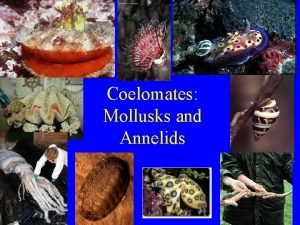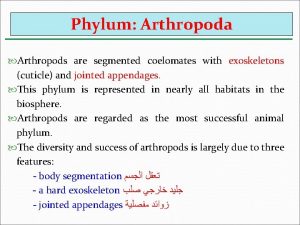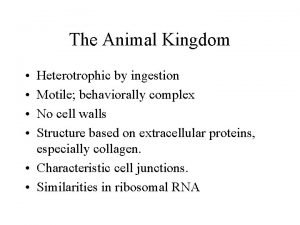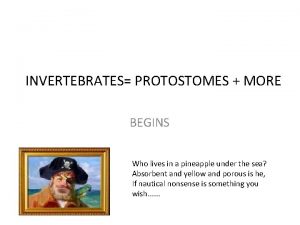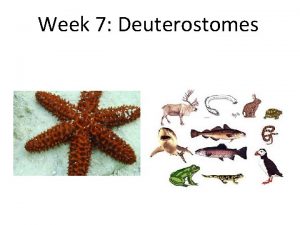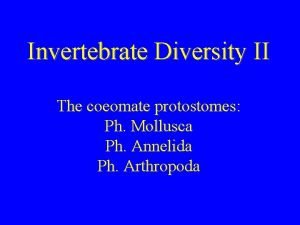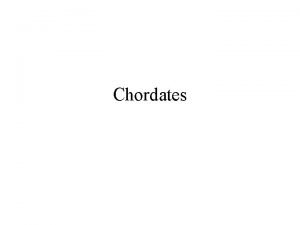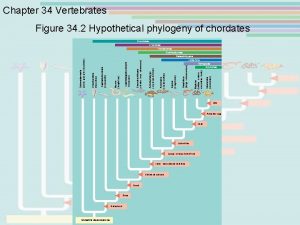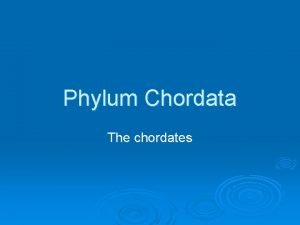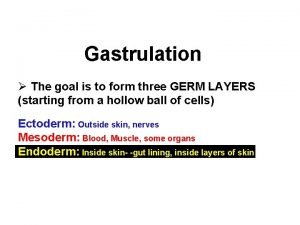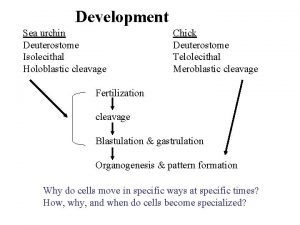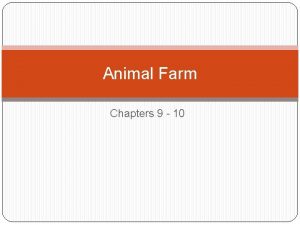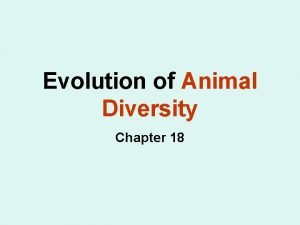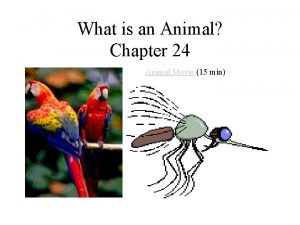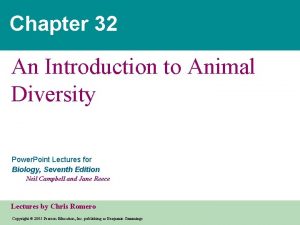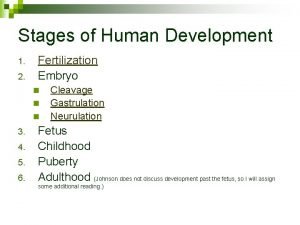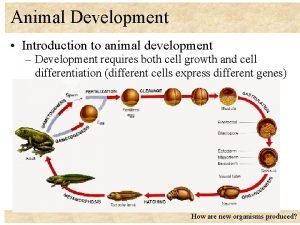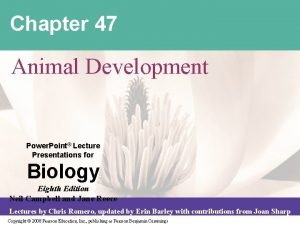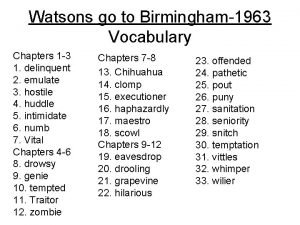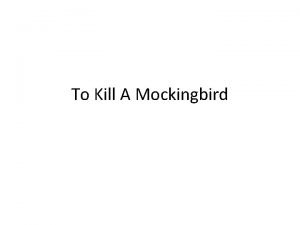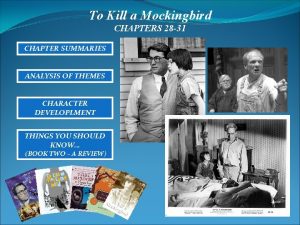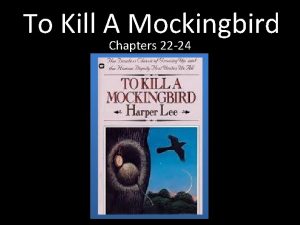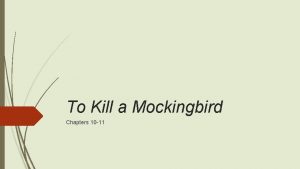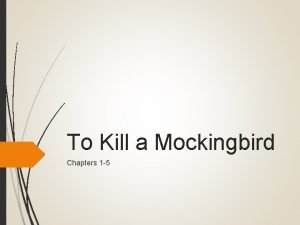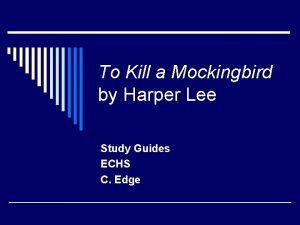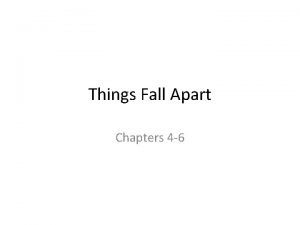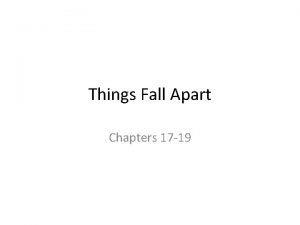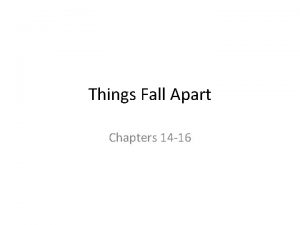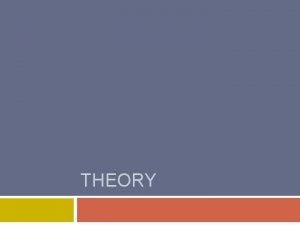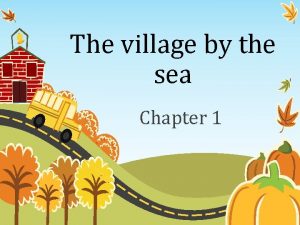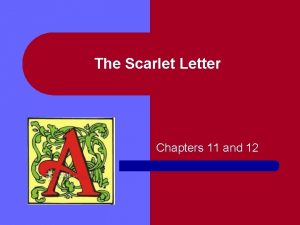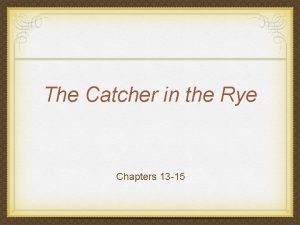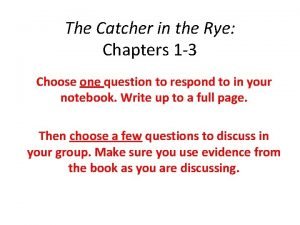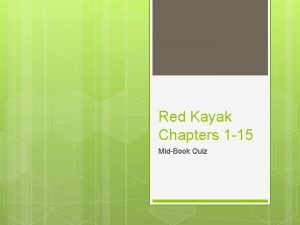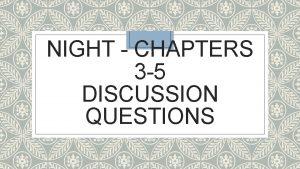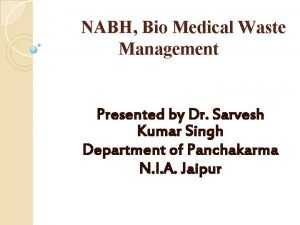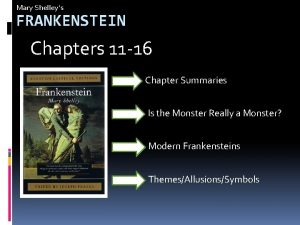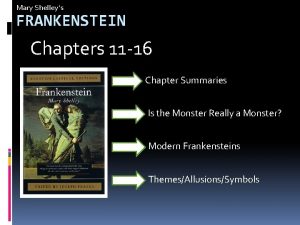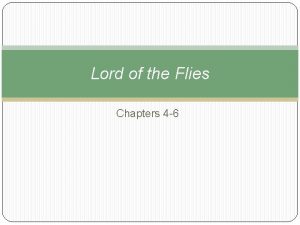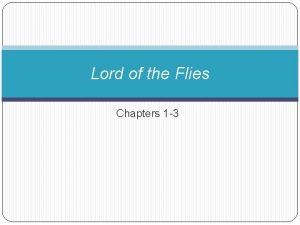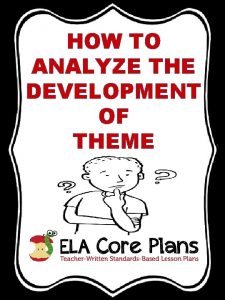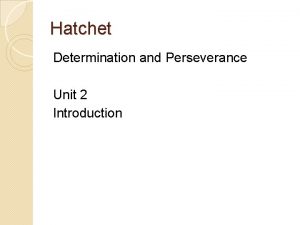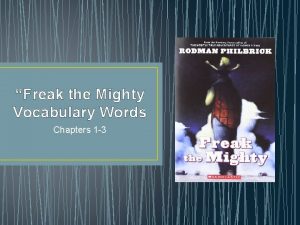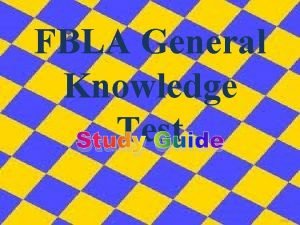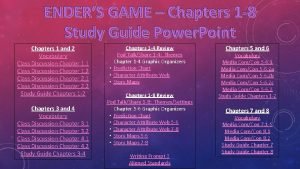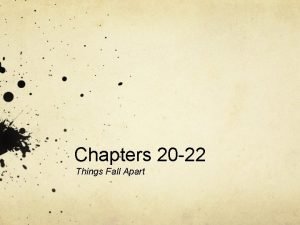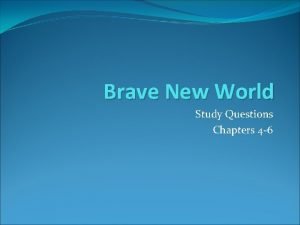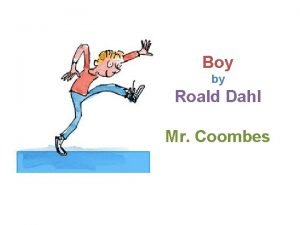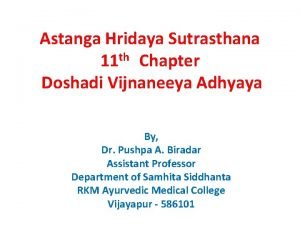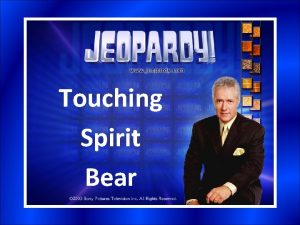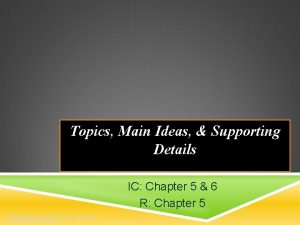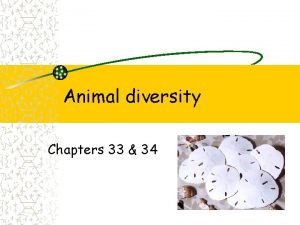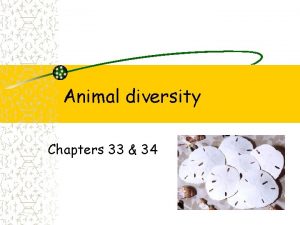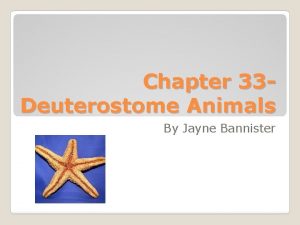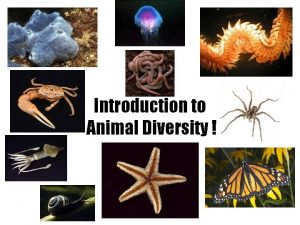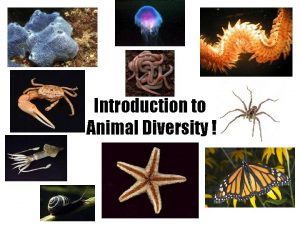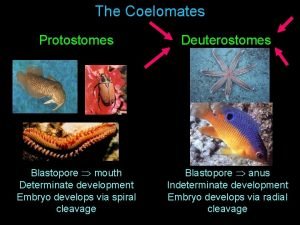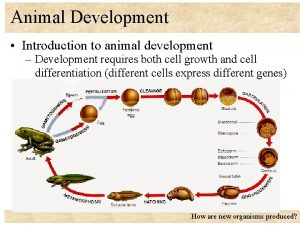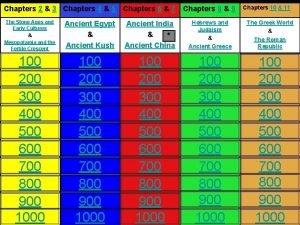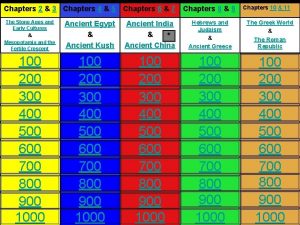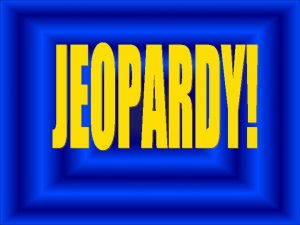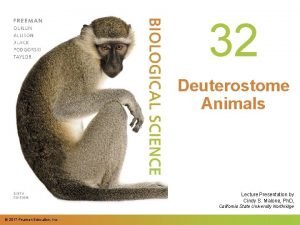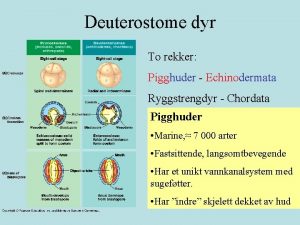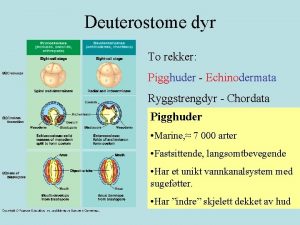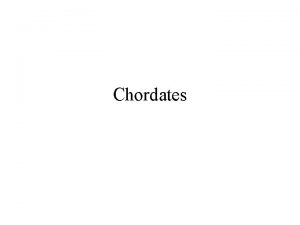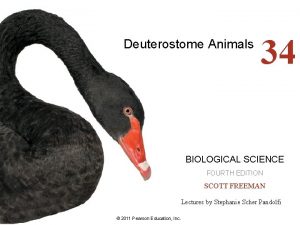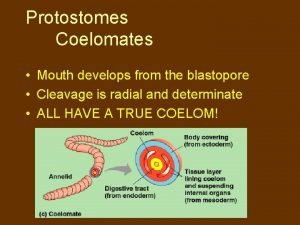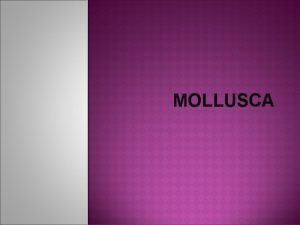Animal diversity Chapters 33 34 Coelomates Deuterostome development


















































































- Slides: 82

Animal diversity Chapters 33 & 34


Coelomates Deuterostome development Second mouth Anus arises from the blastopore Mouth develops later Endoskeleton 2 phylum Enchinodermata and Chordata

Enchinoderms 600 million years ago Starfish Brittle stars Sea urchins Sand dollar Sea cucumber


Enchinoderms “spiny” skin Endoskeleton made up of calcium Start as plates enclosed in living tissue Adults plates fuse and create a hard shell Water-vascular system to help them move Central ring canal with canals that extend into the arms

Enchinoderms Oceans, floor to surface Sea cucumber deepest part of the ocean Evolved from sessile life style Some present day species have a stalk Attaches them to the ground

Body plan Bilateral symmetry larva Development then radial symmetry Nerve ring: central ring 5 branches arise from the central ring Tube feet Part of the water-vascular system Helps attach itself to something Reproduction, sexual and external Regenerate parts



Chordates Deuterostome coelomates Bilateral symmetry Notochord, jointed appendages, segmentation Birds, reptiles, amphibians, fishes, and mammals

Chordates Common features of chordates 1. Nerve cord Hollow Ectoderm Beneath dorsal surface Vertebrates (brain & spinal cord)

Chordates 2. Notochord Dorsal side of the primitive gut in embryo Fluid filled cells Enclosed in stiff fibrous tissue Persists in some Support Reduced to vertebral discs in others

Chordates 3. Pharyngeal slits: Connect pharynx & esophagus to outside Terrestrial vertebrates the slits do not connect to the outside Called pharyngeal pouches Pouches are present in embryos Gills stay connect to the outside 4. Postanal tail At least during embryo development


Chordates All 4 characteristics at some point during development Humans Nerve cord stays Notochord is replaced by the spinal column (discs) Pharyngeal pouches are lost Except one forms Eustachian tube Tail regresses tail bone

Chordates Other features Muscles are arranged in segmented blocks Internal skeleton muscles work against Helps with movement

Chordates Phylum Chordata includes three subphyla, Vertebrates Two phyla of invertebrates Urochordates Cephalochordates.

Fig. 34 -2 Echinodermata (sister group to chordates) Chordates Cephalochordata (lancelets) ANCESTRAL DEUTEROSTOME Urochordata (tunicates) Notochord Head Chondrichthyes (sharks, rays, chimaeras) Vertebral column Actinopterygii (ray-finned fishes) Jaws, mineralized skeleton Lungs or lung derivatives Lobe-fins Actinistia (coelacanths) Dipnoi (lungfishes) Lobed fins Amniotic egg Reptilia (turtles, snakes, crocodiles, birds) Mammalia Milk (mammals) Amniotes Legs Tetrapods Amphibia (frogs, salamanders) Vertebrates Gnathostomes Osteichthyans Petromyzontida (lampreys) Craniates Myxini (hagfishes) Common ancestor of chordates

Chordates Nonvertebrates Notocord but no backbone Tunicates (urochordates) Marine, shallow waters Sessile Adults no cavity or segmentation Tadpole-like larvae show characteristics Tunic: sac of cellulose secreted by adults Surrounds the animal


Chordates Lancelets (cephalochordata) Shallow waters in ocean Buried in sand with anterior end sticking out Plankton Gill slits Closest relative to vertebrate

(a) Fig. 34. 4 (b)

Vertebrates 1. Vertebral column 2. Head Brain is enclosed in a bony skull or cranium Craniate chordates

Vertebrates Other characteristics 1. Neural crest Cells that develop on the crest of the neural tube Form other structures (teeth, neurons, dermis) 2. Internal organs Liver, kidney endocrine glands 3. Endoskeleton Cartilage and bone helps with movement

Neural crest

Fig. 34 -7 Neural crest Dorsal edges of neural plate Neural crest Notochord Neural tube Migrating neural crest cells

Vertebrates 470 million years ago Jawless fish Then jaw developed Gave rise to Amphibians Were first vertebrate moved to land First reptiles 300 million years ago Birds (descendants of dinosaurs) Mammals 220 million years ago

Vertebrates 65 million years ago Dinosaurs disappeared Gave rise to larger mammals Nine classes of vertebrae 5 fish (2 are extinct) 4 tetrapods (animals with 4 limbs) Amphibians, reptiles, birds, mammals



Fish Characteristics Vary in size, shape, color, appearance Location (marine and freshwater) 1. Vertebral column 2. Jaws & paired appendages Helps eat larger and active prey Paired fins help with swim

Fish 3. Gills Extract oxygen dissolved in water Vessels rich in blood Supported by cartilage 4. Single-loop blood circulation Blood pumped from heart to gills Oxygenated blood to body Then returns to heart

Fish 5. Nutritional deficiencies Cannot make certain aa Must consume them

Fish evolution First fish jawless Internal skeleton made of cartilage Sucked up small food particles Hagfish: Present day jawless fish

Fig. 34 -10

Fish Jaw 410 million years ago Cartilage, supported gills Teeth evolved Spiny fish with scales had bone No longer exist Bony and sharks developed next Sharks dominated for awhile

Fish Skeleton cartilage with calcium carbonate Makes for a lighter skeleton Shark teeth first to be developed Not firmly attached so fall out easily Reproduction advanced with internal fertilization Most females give birth to pups

Fish Bony fish Cartilage is replaced by bone Ossification Early fish evolved in freshwater unlike shark First bony fish were small Fins of thin scales Symmetrical tails

Fish Bony fish most dominant Swim bladder Gas filled sac that keeps them floating Sharks have to keep moving or they sink Lateral line system Helps fish detect movement of objects Helps orient the fish Gill cover

Fig. 34 -16 Spinal cord Swim bladder Dorsal fin Brain Adipose fin (characteristic of trout) Nostril Anal fin Cut edge of operculum Liver Gills Heart Kidney Stomach Intestine Gonad Lateral line Anus Pelvic fin Urinary bladder Caudal fin

Fig. 34 -18

Fig. 34 -19 Bones supporting gills Tetrapod limb skeleton

Amphibians First vertebrae to walk on land Descendants of fish Small More species than mammals Frogs, salamanders and caccileans Play key role in terrestrial food chains


Amphibians Characteristics 1. Legs 4 legs helps movement on land (tetrapods) 2. Cutaneous respiration Respiration occurs across their skin Moist skin 3. Lungs Pair of lungs, poorly developed Lower mouth and suck in air

Amphibians 4. Pulmonary veins Return aerated blood to heart Re-pumps to body 5. Partially divided heart Two chambers are separate Prevents un-aerated/aerated blood mixing

Amphibian evolution Amphibia Greek “both lives” Evolved from lobe-finned fish Adaptations happened due to movement on land 1. Legs 2. Lungs 3. Heart 4. Reproduction 5. Keep body from drying out

Amphibians 370 million years ago in Greenland Present day 3 orders Anura Frogs and toads Frogs smooth, moist skin, long hind legs Live in or near water Toads dry skin, short legs Reproduce in water (tadpoles) Eggs fertilized externally


Amphibians Urodela (Caudata) Salamanders Long tails, moist skin Fertilization external, eggs in water Apoda Tropical burrowing amphibians Resemble worms

Fig. 34 -23

Reptiles


Reptiles Characteristics 1. Amniotic egg (Amniotes) Chorion: outer layer of egg Below the shell (gas exchange) Amnion: encases the embryo (cushions) Yolk sac: supplies food (blood supply) Allantois: surrounds a cavity in which wastes from the embryo goes


Fig. 34 -26

Reptiles 2. Dry skin Watertight skin Scales 3. Thoracic breathing Expand contract rib cage Pulls air into lungs

Reptiles Evolution 4 major groups of reptiles dominated for 250 million years Dinosaurs Present day reptiles Turtles, lizards and snakes, tuatarus, and crocodiles

Fig. 34 -27 d (d) Eastern box turtle (Terrapene carolina)

Reptiles Other characteristics Internal fertilization 4 chambered heart Ectothermic: Body temperature determined by their environment Regulate temperature by behavior

Birds

Fig. 34 -29 Toothed beak Airfoil wing with contour feathers Wing claw Long tail with many vertebrae

Birds are successful due to the structure of the feather Derived from reptilian scales


Birds Bird’s anatomy modified to enhance flight. One adaptation reduce weight The absence of some organs. Females have only one ovary. Modern birds are toothless Grind their food in a muscular gizzard near the stomach.

Birds Characteristics 1. Feathers 2. Flight skeleton Bones are thin Hollow


Birds Descended from dinosaurs Adaptations 1. Efficient respiration 2. Efficient circulation 3. Endothermy Generate heat internally 4. Amniotic egg

Mammals


Mammals 5300 living species Smallest number of species of any the classes of vertebrae Characteristics 1. Mammary glands Newborns nurse Milk is rich in fat, sugar, protein, vitamins and minerals

Mammals 2. Hair Consists of protein Sensitive to touch (cat) Avoid colliding with objects 3. Endothermy Fat layer under skin 4. Placenta Carry and nourish babies

Mammals 5. Teeth Variety of teeth to match diet 6. Middle ear

Fig. 34 -31 Key Articular Quadrate Dentary Temporal fenestra Jaw joint Squamosal (a) In Biarmosuchus, an early synapsid, the articular and quadrate bones formed the jaw joint. Middle ear Stapes Eardrum Inner ear Middle ear Inner ear Stapes Sound Incus (quadrate) Malleus (articular) Present-day reptile Present-day mammal (b) In mammals, the articular and quadrate bones are incorporated into the middle ear.

Mammals 1. Egg-laying Monotremes: duck-billed platypus Found in Australia 2. Marsupials Pouched mammals 3. Placental mammals

Marsupials





 Coelomates
Coelomates Segmented coelomates
Segmented coelomates Coelomates
Coelomates Mr krab spongebob
Mr krab spongebob Chordate synapomorphies
Chordate synapomorphies Deuterostomes vs protostomes
Deuterostomes vs protostomes Deuterostomes vs protostomes
Deuterostomes vs protostomes Larval form of urochordata
Larval form of urochordata Ancestral deuterostome
Ancestral deuterostome Phylum del cocodrilo
Phylum del cocodrilo Ectoderm endoderm mesoderm
Ectoderm endoderm mesoderm Kladistik
Kladistik 33 hour chick embryo whole mount
33 hour chick embryo whole mount Genetic diversity vs species diversity
Genetic diversity vs species diversity Ecosystem jigsaw activity
Ecosystem jigsaw activity What do the pigs green tail ribbons represent
What do the pigs green tail ribbons represent Grastula
Grastula Tiburonia granrojo
Tiburonia granrojo General features of animals
General features of animals Introduction to animal diversity
Introduction to animal diversity Diversity and human needs and development
Diversity and human needs and development Animal cell and plant cell venn diagram
Animal cell and plant cell venn diagram Plant vs animal cells venn diagram
Plant vs animal cells venn diagram Animal rights vs animal welfare
Animal rights vs animal welfare Animal pole
Animal pole Stages of animal development
Stages of animal development Animal development ppt
Animal development ppt The watsons go to birmingham vocabulary
The watsons go to birmingham vocabulary Tuesdays with morrie answers
Tuesdays with morrie answers The catcher and the rye quotes
The catcher and the rye quotes To kill a mockingbird part 1 quiz
To kill a mockingbird part 1 quiz Why did scout rub walter cunningham's nose in the dirt?
Why did scout rub walter cunningham's nose in the dirt? To kill a mockingbird chapter 10-11 summary
To kill a mockingbird chapter 10-11 summary To kill a mockingbird chapter 4-6 summary
To kill a mockingbird chapter 4-6 summary To kill a mockingbird chapter 28 summary
To kill a mockingbird chapter 28 summary To kill a mockingbird chapter 27-31 summary
To kill a mockingbird chapter 27-31 summary What happens in chapter 22 of to kill a mockingbird
What happens in chapter 22 of to kill a mockingbird Chapter 12 tkamb
Chapter 12 tkamb To kill a mockingbird chapters 10-11
To kill a mockingbird chapters 10-11 Finches housekeeper
Finches housekeeper To kill a mockingbird short chapter summaries
To kill a mockingbird short chapter summaries Guilelessness definition to kill a mockingbird
Guilelessness definition to kill a mockingbird Describe the wrestling match in things fall apart
Describe the wrestling match in things fall apart Things fall apart chapter 19
Things fall apart chapter 19 Things fall apart chapter 14-15 summary
Things fall apart chapter 14-15 summary Portia nelson autobiography in five short chapters
Portia nelson autobiography in five short chapters Village by the sea chapter 1
Village by the sea chapter 1 Scarlet letter chapter 11-12 summary
Scarlet letter chapter 11-12 summary The reluctant fundamentalist book chapter summary
The reluctant fundamentalist book chapter summary The reluctant fundamentalist chapter summary
The reluctant fundamentalist chapter summary 5 steps of marketing research
5 steps of marketing research The hunger games chapter 2 questions
The hunger games chapter 2 questions The hiding place chapter 9
The hiding place chapter 9 What season is approaching the great gatsby chapter 8
What season is approaching the great gatsby chapter 8 Gatsby chapter 3 analysis
Gatsby chapter 3 analysis Catcher in the rye chapter 13-15 summary
Catcher in the rye chapter 13-15 summary Catcher in the rye chapter 27
Catcher in the rye chapter 27 Noughts and crosses summary of each chapter
Noughts and crosses summary of each chapter Summary of the red kayak
Summary of the red kayak Percy jackson vocabulary chapters 5-8
Percy jackson vocabulary chapters 5-8 Night chapter 5 reading questions
Night chapter 5 reading questions Bmw nabh
Bmw nabh Frankenstein chapters 11-16 summary
Frankenstein chapters 11-16 summary Frankenstein chapter summaries 11-16
Frankenstein chapter summaries 11-16 Timeline of events lord of the flies chapter 4-6
Timeline of events lord of the flies chapter 4-6 Lord of the flies chapters 1-3
Lord of the flies chapters 1-3 The fox and the goat setting
The fox and the goat setting Hatchet lesson
Hatchet lesson Good to great chapter 1
Good to great chapter 1 Freak the mighty vocabulary
Freak the mighty vocabulary Fever 1793 chapter 24
Fever 1793 chapter 24 The fbla_pbl national center is located where?
The fbla_pbl national center is located where? How many chapters are in enders game
How many chapters are in enders game Things fall apart chapter 20-21 summary
Things fall apart chapter 20-21 summary Candide chapters
Candide chapters Brave new world chapters 4-6
Brave new world chapters 4-6 Chapter 1 brave new world
Chapter 1 brave new world Mr coombes boy
Mr coombes boy Ashtanga hridaya chapters
Ashtanga hridaya chapters A thousand splendid suns chapters
A thousand splendid suns chapters Why did cole beat up peter
Why did cole beat up peter Topics presented in chapters
Topics presented in chapters Tkam chapter 9
Tkam chapter 9
